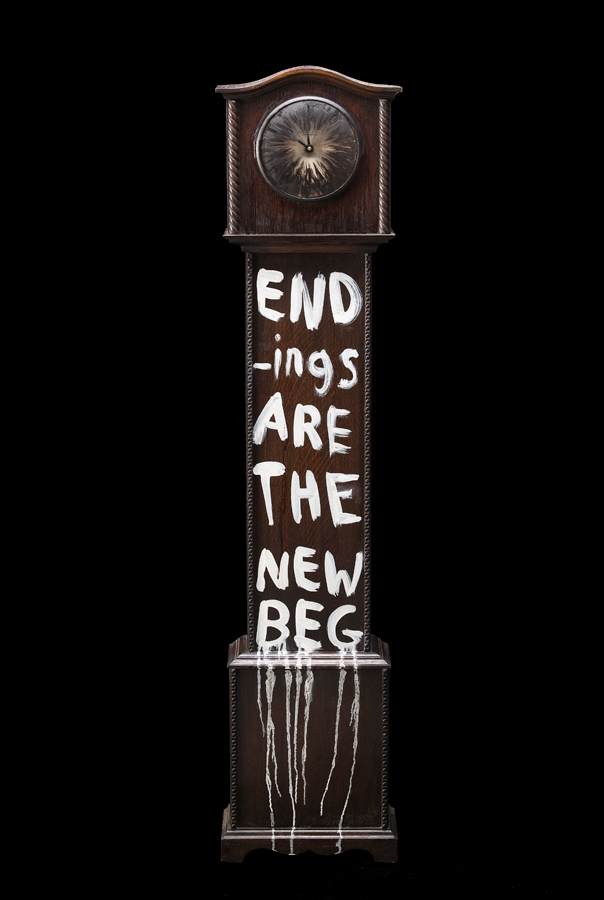ArtReview sent a questionnaire to artists and curators exhibiting in and curating the various national pavilions of the 2015 Venice Biennale, the responses to which will be published daily in the lead-up to the Venice Biennale opening.
Fiona Hall is representing Australia. The Pavilion is in the Giardini.
What can you tell us about your exhibition plans for Venice?
It is an installation in Australia’s new pavilion, which is sight unseen for me at this stage, but I’ve been living with the interior dimensions in my head since I first received the invitation to be the 2015 Australian Venice artist 18 months ago.
The work is picking up on the disquiet of our time, reflecting upon our global conflict, finances, and nature – and the demise of nature. I mean the demise of nature with climate change. And these three things are absolutely interconnected. We tend to see the world as a series of pigeon-holed issues and problems, but nothing exists in isolation. By bringing these ideas together through varied works, I’m hoping the installation will forge conceptual links.
This is an installation that reflects on the madness, badness, and sadness of our time; I sense I’m not alone in having such a response to the current global state of play. But this said, it won’t be a gloomy installation. I don’t want to hit people over the head with something I think everyone knows already—it won’t accomplish anything in terms of my intention.
Are you approaching this show in a different way as to how you would a ‘normal’ exhibition?
Quite aside from the momentousness of carrying the can for Australia in Venice, and the honour and challenge that comes with that, the new Pavilion interior is also physically the largest space I’ve worked in as a solo artist, so the configuration of the installation is a point of departure for me. Unlike many of my previous solo shows, which have comprised distinctly separate works, my work in Venice functions as one multifaceted installation.
What does it mean to ‘represent’ your country? Do you find it an honour or problematic?
It’s both. The Venice Biennale is unique in being predominantly an uncurated exhibition, in that each artist has been selected by their country. I think that, inevitably, there are politics involved in the form of selection process—art politics and, perhaps also, the politics of nationalism.
How are you approaching the different audiences who come to Venice—the masses of artist peers, gallerists, curators and critics concentrated around the opening and the general public who come through over the following months?
The audience that attends most exhibitions are surprisingly diverse, and not least in Venice. There’s such a mix of people from the art world, as well as the general audience who are from other walks of life – and who often have very discerning responses to artists’ work. You never know who your audience is, and I’m certainly not the kind of artist to make work to curry favour with big name artworld people, that would be a misdirected way of making art and a total waste of time. But having said that I’m not one of those artists who says audiences don’t matter and I just do it for myself, because I hope/trust there’s an audience who is responding. I think that for an artist exhibiting in Venice, it’s an opportunity to become part of a cross-cultural dialogue on the issues and concerns of our time.
What are your earliest or best memories of the biennale?
Purely by coincidence, the last one. After finishing another project I needed some breathing space so I thought I’d recharge my batteries by going to Europe, in part to see the Venice Biennale. I received the invitation to show in Venice two days before I departed from Australia. That’s been my first and only experience of a Venice Biennale to date. The absolute highlight for me of that Biennale was the curated exhibition in the Arsenale, The Encyclopedic Palace.
You’ll no doubt be very busy, but what else are you looking forward to seeing?
Everything! And I’m looking forward to seeing Joan Jonas’s installation as we both participated in the most recent Documenta. We were “neighbours” in Kassel, as our work was installed close by each other.
How does a having a pavilion in Venice affect the art scene in your home country?
It’s huge. In the art scene, the Venice Biennale is the pinnacle for any Australian artist. There are many artists who would aspire to represent Australia. It’s Australia’s very good fortune that we will now have such a fantastic exhibition space. I’m sure that our new pavilion will be an object of envy from other nations! It will be a great venue for both Australian artists and architects in years to come.
Read all responses to the Venice Questionnaire 2015 edition published so far
Read all 30 responses to the Venice Questionnaire 2013 edition
Online exclusive published on 30 April.
